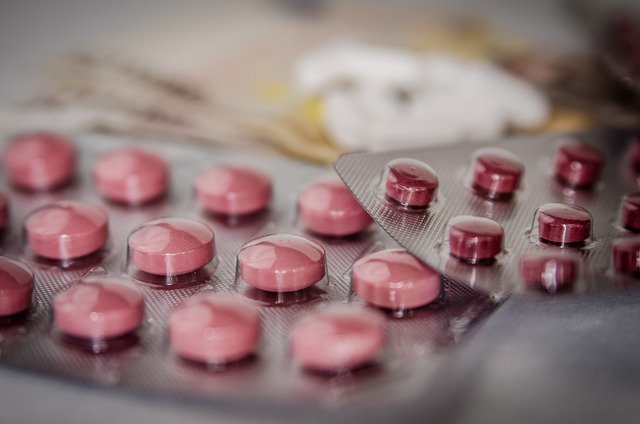Medications Causing Drug-Induced Angioedema and Treatment in United States 2025
Drug-induced angioedema causes many emergency visits in the United States. This article summarizes common culprit medications, underlying mechanisms, clinical presentation, and 2025 treatment approaches to help patients and clinicians recognize symptoms early and manage them effectively.

What Is Drug-Induced Angioedema?
Angioedema is a sudden, localized swelling beneath the skin or mucous membranes, often affecting areas like the lips, face, tongue, and throat. When caused by medications, it is referred to as drug-induced angioedema. Unlike typical allergic reactions accompanied by hives or itching, drug-induced angioedema often involves deeper tissue swelling without urticaria or pruritus, which may delay recognition and treatment.
Medications Commonly Causing Angioedema in the United States
Certain medications are well-known for their association with drug-induced angioedema. In the United States, the most commonly implicated categories include:
- Angiotensin-Converting Enzyme (ACE) Inhibitors – The leading cause, responsible for 20–40% of angioedema-related emergency visits. Examples include lisinopril, enalapril, and captopril. These drugs increase bradykinin levels, leading to vasodilation and vascular permeability, which causes swelling.
- Nonsteroidal Anti-Inflammatory Drugs (NSAIDs) – Medications like ibuprofen, aspirin, and naproxen can trigger angioedema through allergic and non-allergic pathways.
- Antibiotics – Penicillin and sulfonamide antibiotics may induce immune-mediated angioedema.
- Other Drugs – Angiotensin receptor blockers (ARBs), certain pain medications, some antidepressants, gliptins, neprilysin inhibitors, and tissue plasminogen activators can cause angioedema, often via bradykinin accumulation or other mechanisms.
Who Is at Risk?
ACE inhibitor-induced angioedema occurs in approximately 0.1% to 0.7% of patients taking these drugs. Higher risk is observed in:
- People of African descent (up to five times the risk compared to other groups)
- Women and smokers
- Older adults
Because ACE inhibitors account for about 35% of antihypertensive prescriptions in the U.S., their widespread use contributes to the frequency of drug-induced angioedema cases.
Understanding the Pathophysiology: Bradykinin-Mediated vs. Histamine-Mediated Angioedema
The mechanism varies by drug type:
- ACE Inhibitors – Increase bradykinin levels by inhibiting its breakdown, causing swelling in deeper skin layers and mucous membranes without histamine involvement. This form typically does not cause itchiness or hives.
- NSAIDs and Antibiotics – May cause angioedema through allergic (mast cell-mediated histamine release) or non-allergic pathways.
Bradykinin-mediated angioedema does not respond well to antihistamines or corticosteroids alone, which is important for treatment planning.
Clinical Presentation and Diagnosis
Symptoms can develop within hours to days after starting the medication but may also occur months or years later. Key features include:
- Asymmetric, non-itchy swelling of lips, eyelids, face, tongue, and throat
- Absence of hives or itching
- Potential airway compromise with difficulty breathing, hoarseness, stridor, or throat tightness
Diagnosis relies on clinical history, recent or ongoing use of high-risk medications, and symptom assessment. Complement studies (C4 and C1 esterase inhibitor testing) help rule out hereditary or acquired angioedema.
Immediate Treatment Approaches in the United States
The cornerstone of management is immediate discontinuation of the offending drug.
- Mild Cases – Antihistamines and corticosteroids may be used, though their effectiveness is limited for bradykinin-mediated angioedema.
- Airway Involvement – Emergency care may require epinephrine, high-dose corticosteroids, fresh frozen plasma, or C1 esterase inhibitor concentrates. Severe cases may need intubation or tracheostomy to secure the airway.
Because bradykinin-mediated angioedema does not involve histamine, traditional allergy treatments may be insufficient, and targeted therapies are sometimes required.
Long-Term Management and Alternative Medications
Patients who develop ACE inhibitor-induced angioedema should avoid all ACE inhibitors. Safer alternatives include:
- Calcium channel blockers
- Diuretics
ARBs may be considered cautiously, as they pose a lower risk but still require monitoring. Clear documentation of drug allergies in medical records and patient education are essential.
Prevention Strategies in Clinical Practice
Prevention relies on:
- Reviewing allergy and medication history before prescribing high-risk drugs
- Educating patients on early warning signs
- Using medical alert identification for known drug allergies
- Considering epinephrine auto-injectors for select high-risk individuals (with the note that epinephrine is less effective for bradykinin-mediated cases)
Healthcare providers in the U.S. focus on vigilance to identify symptoms early and reduce emergency cases.
Specialist Referral and Advanced Care
Patients with recurrent or complicated angioedema—or suspected hereditary/acquired forms—should be referred to an allergist or immunologist. Specialists can offer:
- Advanced diagnostics including genetic studies
- Treatments such as plasma-derived C1 inhibitor concentrates, bradykinin receptor antagonists, and kallikrein inhibitors (mainly for hereditary cases but sometimes for drug-induced cases)
- Guidance on preventive strategies
Emergency Preparedness and Patient Education
Patients on high-risk medications should be informed about potential symptoms and the need for urgent evaluation if swelling or breathing problems occur. Public and professional awareness programs can improve early recognition and prevent fatal airway obstruction.
Conclusion
Drug-induced angioedema is a serious but manageable condition in the United States in 2025. ACE inhibitors remain the most common cause, followed by NSAIDs and antibiotics. Prompt recognition, stopping the causative drug, and appropriate treatment are crucial. Long-term management, preventive measures, and patient education can significantly reduce risks and improve outcomes.
Sources
- UpToDate: ACE inhibitor-induced angioedema overview and management insights.https://www.uptodate.com/contents/ace-inhibitor-induced-angioedema
- Allergy, Asthma & Clinical Immunology Journal: Comprehensive review of angioedema classification, diagnosis, and treatment.https://www.aacijournal.biomedcentral.com/articles/10.1186/s13223-024-00934-3
- Signal Terrace: Understanding drug-induced angioedema causes, symptoms, and treatments guide.https://signalterrace.com/en/articles/understanding-drug-induced-angioedema-causes-symptoms-treatment
Disclaimer: This article provides informational content based on current medical literature and guidelines as of 2025. It does not include specific pricing or transactional offers. Medication choices and access vary by region and healthcare providers. Readers should consult a qualified healthcare professional for personalized medical advice.




